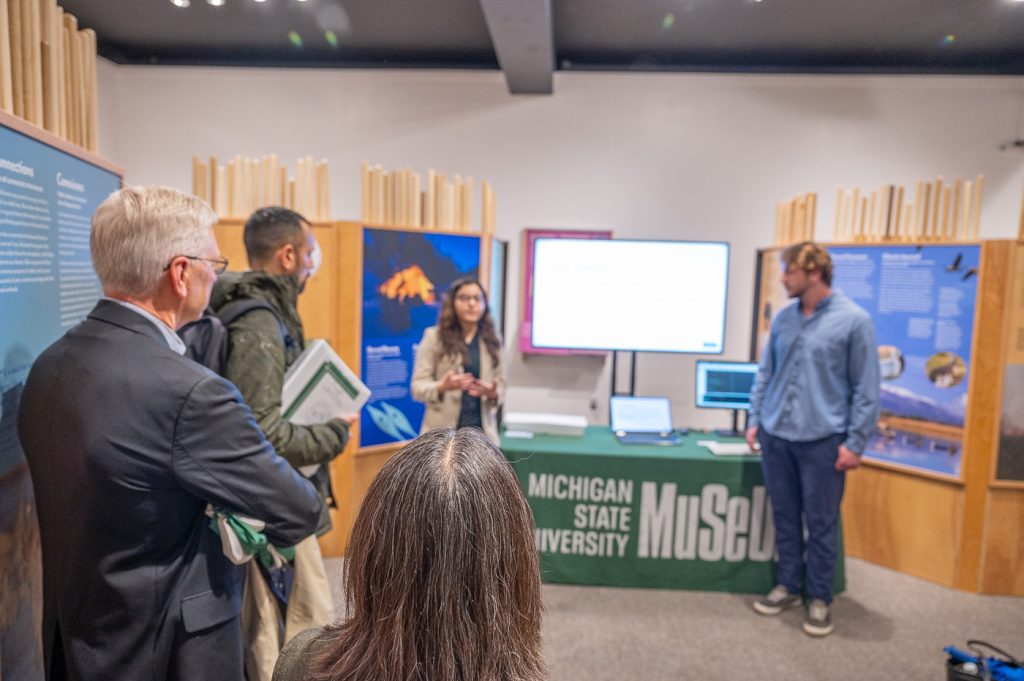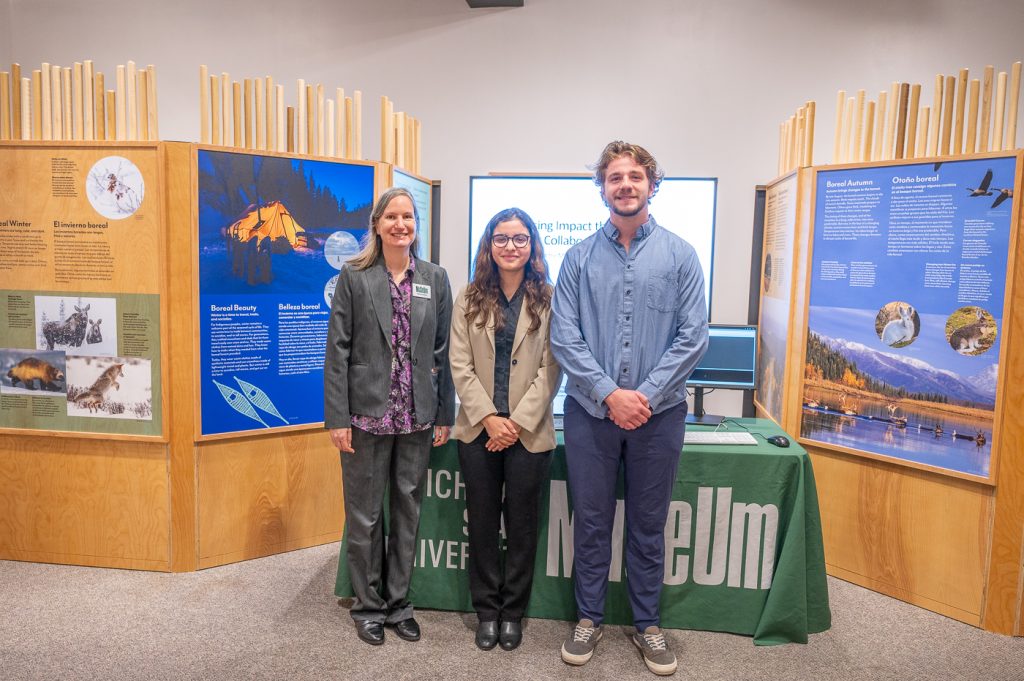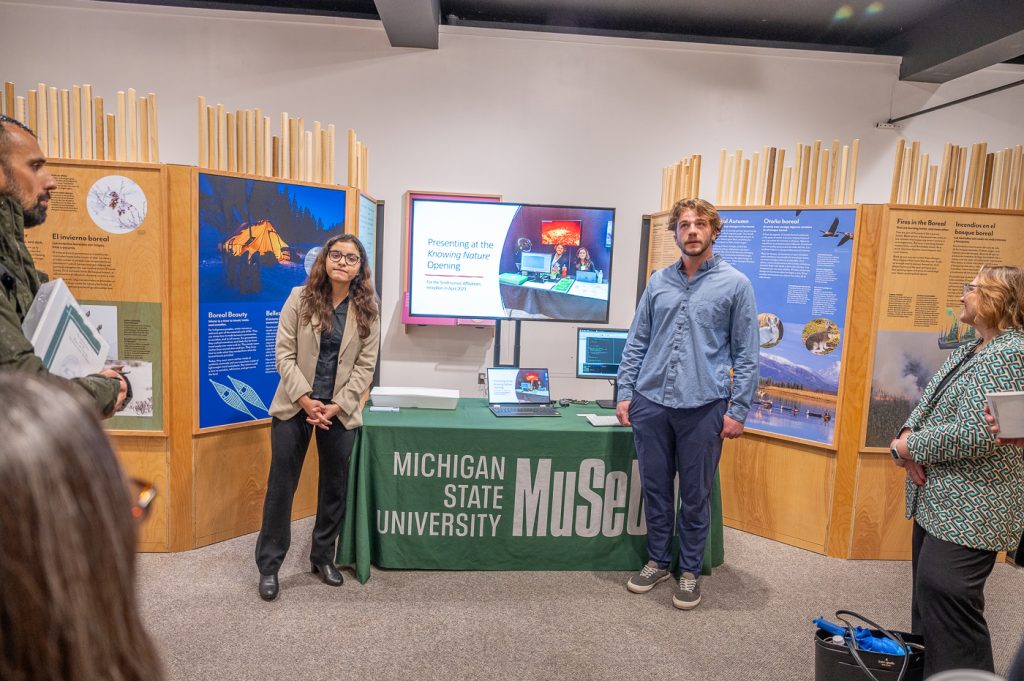Enhancing Museum Accessibility

Developing RFID Solutions for Enhancing Museum Accessibility
Background
Museums have the potential to provide unique experiences for people of all ages and abilities, offering exciting ways for visitors to participate in individual and collective learning, personal interactions, and unique experiences of wonder and enjoyment. While museums can provide spaces for differentiated learning, providing opportunities for content customization in museum galleries can be challenging to design and provide in practice. The variety of learning modes designers and educators may want to incorporate into an exhibition is limited by physical space, object/specimen types, light and sound restrictions, funding, and the educational and technical ability of the designers. Yet, it is the museum’s responsibility to make spaces welcoming, accessible, and inclusive. Figuring out how to make this happen is a major challenge for museums in general.
The MSU Museum has long been interested in accessibility and using technology to make this a reality. More specifically, making the MSU Museum more accessible to people who have visual impairments has been a long-term goal. Michigan numbers from the Centers for Disease Control and Prevention (CDC) indicate that 4% of Michigan adults are blind or have serious difficulty seeing, even when wearing glasses. Visitors who are blind or have low vision often have difficulty accessing information about objects and specimens on display, because the information is presented on text labels. QR codes can help provide information, but again, people who cannot see the codes will not know where they are to scan them. Enter Radio-Frequency Identification (RFID) technology. RFID uses tags scanned by a reader to deliver information to a user through a website, software, or application. If you have a credit card with “tap to pay” or a badge to scan for door or parking entry, you have used RFID technology. A tiny RFID tag is embedded into a card, label, or other object. RFID readers scan for the tag either very close up (near field) or farther away (far field). This technology offers a lot of promise to museums for increasing accessibility to information.
WHAT WE DID
What We Did
Project Team
- Chirag Bhansali (Computer Science and Engineering)
- Jason Fagan (Experience Architecture)
- Vanshika Kadian (Computer Science)
In March 2022, the Smithsonian Institution Traveling Exhibition Service (SITES approached the MSU Museum, as a Smithsonian Affiliate, about collaborating with them on a unique project. SITES was planning to develop RFID technology for the upcoming traveling exhibition Knowing Nature: Stories of the Boreal Forest to be installed at the MSU Museum from April-November 2023. SITES’s goal was to experiment with using RFID technology to allow visitors with disabilities to customize exhibition experiences by self-identifying their preferences for accessibility options. A small, wearable RFID device (like a lanyard or wristband) would trigger the desired adjustments in the gallery space. The Smithsonian planned to test visitor experience outcomes with the technology in the gallery at the MSU Museum. SITES invited us to work with them on the testing process. We said yes to the project and began preliminary planning with SITES in Summer 2022. In the same timeframe, the MSU Museum received a Creating Inclusive Excellence Grant (CIEG) from Michigan State University in Fall 2022. With Dr. Denice Blair as the project leader, the $15,000 award was used to fund a parallel RFID project to make one gallery at the MSU Museum more accessible to people who are blind or visually impaired by delivering audio content to a device. The timing offered a perfect opportunity to experiment more with RFID technology and learn how it might increase accessibility in our galleries.
With the CIEG funding, we were able to hire a team of student employees with the right expertise: Chirag Bhansali (Computer Science and Engineering), Jason Fagan (Experience Architecture), and Vanshika Kadian (Computer Science). Project work began in January 2023, with learning together about RFID technology, refining the project management plan, and researching RFID hardware and software. In the following months, the project team met with experts about RFID tags, started writing code for the reader, and submitted a research study application to MSU’s Human Research Protection Program. We continued working with the technology: configuring the tags, working on the reader, and starting the process of building a digital application to deliver MSU Museum gallery content to devices. In May 2023, we prepared for the user testing sessions, which occurred in June 2023. We were grateful to the participants who shared feedback about the app and about their museum visiting experiences in general. In six months, this project team (1) researched RFID technology, (2) developed an app to deliver content to a device, and (3) tested the app with 10 volunteer research participants with disabilities.
A demonstration of the RFID project was provided for a visiting Smithsonian Affiliations group in April 2023. Additionally, the project work was presented at the “Smithsonian National Education Summit” in July 2023 and the Smithsonian Affiliations Virtual Conference in November 2023.
WHAT WE LEARNED
What We Learned
GOALS
- Expand experimentation with RFID technology for exhibition use.
- Develop technology accessibility methodologies and practices for application to MSU Museum exhibit and educational design.
- Train MSU students in museum-based accessibility research.
- Increase the Museum’s capacity for future technology-based research through training and developing best practices.
Our goals in both projects were focused on testing RFID technology and expanding the Museum’s capacity to do future work.
Goal 1: Expand experimentation with RFID technology for exhibition use. The RFID work allowed us to learn about how we might use the technology in different applications within the Museum. We now have better knowledge, skills, and a vision for future projects. One of the best things was being able to give MSU students the chance to work on a project like this and to let them take the lead in developing the products.
Goal 2: Develop technology accessibility methodologies and practices for application to MSU Museum exhibit and educational design. The CIEG project provided new knowledge, especially related to using technology, can help us address visitors’ needs. Also, the visitor testing illuminated many areas of accessibility that we had not considered. For example, it will be important for us to use what we learned about people’s preference for materials, spatial navigation, and technical supports. We will be able to integrate this information into the continued RFID work and future exhibition design and plans for educational experiences, such as hands-on components and visitor programs.
Goal 3: Train MSU students in museum-based accessibility research. We were able to construct good experiences for the research assistants in how to frame a user testing session, especially for people with specific disabilities. We all gained more experience in planning how to make the museum gallery welcoming and how to make sure everyone had testing resources in the format(s) they preferred (e.g., digital, Braille, hard copy). The students learned how to design focus group questions, communicate with research participants, set up the physical testing space, conduct a testing session, record and analyze data files, and use results to inform redesign of the technology. The students also learned about the importance of protecting the interests of research participants and the security of data.
Goal 4: Increase the Museum’s capacity for future technology-based research through training and developing best practices. This project helped the Museum provide three students who are trained and experienced working on this type of project. These students would now be considered more “senior” research assistants, with the ability to help mentor less experienced peers joining a future project.
Future Applications
The MSU Museum is better positioned to do future work with RFID and to use what we learned in the user testing to inform day-to-day interactions with museum visitors. Our plan is to seek funding and other support to create a pathway forward for building on this work, so we can take the next steps toward making our museum more accessible for people with visual impairments and all visitors.



